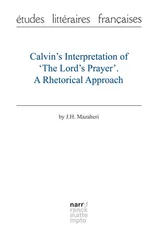Helge Fauskanger - J.R.R. Tolkien’s Lord’s prayer and Hail Mary in Quenya - Syntactical and Etymological Analysis
Здесь есть возможность читать онлайн «Helge Fauskanger - J.R.R. Tolkien’s Lord’s prayer and Hail Mary in Quenya - Syntactical and Etymological Analysis» весь текст электронной книги совершенно бесплатно (целиком полную версию без сокращений). В некоторых случаях можно слушать аудио, скачать через торрент в формате fb2 и присутствует краткое содержание. Жанр: Языкознание, на английском языке. Описание произведения, (предисловие) а так же отзывы посетителей доступны на портале библиотеки ЛибКат.
- Название:J.R.R. Tolkien’s Lord’s prayer and Hail Mary in Quenya: Syntactical and Etymological Analysis
- Автор:
- Жанр:
- Год:неизвестен
- ISBN:нет данных
- Рейтинг книги:5 / 5. Голосов: 1
-
Избранное:Добавить в избранное
- Отзывы:
-
Ваша оценка:
- 100
- 1
- 2
- 3
- 4
- 5
J.R.R. Tolkien’s Lord’s prayer and Hail Mary in Quenya: Syntactical and Etymological Analysis: краткое содержание, описание и аннотация
Предлагаем к чтению аннотацию, описание, краткое содержание или предисловие (зависит от того, что написал сам автор книги «J.R.R. Tolkien’s Lord’s prayer and Hail Mary in Quenya: Syntactical and Etymological Analysis»). Если вы не нашли необходимую информацию о книге — напишите в комментариях, мы постараемся отыскать её.
J.R.R. Tolkien’s Lord’s prayer and Hail Mary in Quenya: Syntactical and Etymological Analysis — читать онлайн бесплатно полную книгу (весь текст) целиком
Ниже представлен текст книги, разбитый по страницам. Система сохранения места последней прочитанной страницы, позволяет с удобством читать онлайн бесплатно книгу «J.R.R. Tolkien’s Lord’s prayer and Hail Mary in Quenya: Syntactical and Etymological Analysis», без необходимости каждый раз заново искать на чём Вы остановились. Поставьте закладку, и сможете в любой момент перейти на страницу, на которой закончили чтение.
Интервал:
Закладка:
imíca, preposition among . Undoubtedly this is to be derived from the stem mi- inside , the source of the Quenya preposition mi in, within (LR:373). The # imí- part of the word before us would seem to represent a stemvowel-prefixed variant of this stem (an entry imi in , into actually occurs in the Qenya Lexicon p. 42). Notice that "where i is base vowel" (as in mi-), i - can function as an "intensive prefix" (LR:361 s.v. i-). This "prefix" actually amounts to reduplication of the base vowel itself; for an example with another vowel, cf. primitive akwâas an "extension or intensification" of the stem kwa (WJ:392). Notice that akwâfrom kwa would parallel # imí- (* imî-) from mi- also in the fact that the stem-vowel is lengthened in its normal position. This leaves the ending - cato be accounted for. It would descend from - kâ, attested as a primitive adjectival suffix (as when the stem gaya- awe , dread yields primitive gayakâ, explicitly said to be "an adjectival form"; this was also the source of Quenya aika fell , terrible , dire – PM:363 cf. 347). Can an adjectival suffix be used to derive a preposition? This would not be wholly unheard of in Tolkien’s languages: The ancient ending - wâis seen to be adjectival (e.g. primitive laik-wâ green from the undefined stem láyak-, LR:368, or primitive smalwâ fallow , pale from smal- yellow , LR:386). Yet in WJ:365 the same ending turns up on the primitive "adverb and preposition" hekwâ leaving aside , not counting , excluding , except (WJ:365; the root is heke- aside , apart , separate , WJ:361). If the adjectival ending - wâcan also be used to derive adverbs or prepositions, perhaps this is true of other adjectival endings, like - kâ, as well? Another interpretation is also possible: If imícadoes not represent * imî-kâ, the cof the Quenya word may come from an extended form of the stem mi-. It is possible that mi- had an extended form *mik-. (Cf. other extensions in -k, like lep- having the longer form lepek or ot- being extended to otok: LR:368, 379. This *mik- would of course be distinct from mik pierce in WJ:337.) It may be noted that in the entry for mi- in the Etymologies (LR:373), a Quenya adjective mitya interior is listed. No primitive form is listed, but it could very well be * mikyâ(*- yâbeing a well attested adjectival ending; for the development ky> ty, cf. for instance Quenya tyar- cause from the root kyar-, LR:366). This extended stem *mik- could then have a stemvowel-prefixed variant *imîk-, whence * imîkâ> Quenya imíca. This would only leave the ending - a(from *- â) to be accounted for. WJ:382 mentions an adjectival ending - â, and as demonstrated above, it may not be wholly unprecedented that a properly adjectival ending is used to derive a preposition.
indómelya, noun with a pronominal suffix: thy will . Removing - lya thy (concerning this ending, see esselya), we are left with # indómeas the noun will , a new word wholly different from earlier known words of the same meaning (like nirme, VT39:30, or þelma> * selma, WJ:319). Yet # indómeseems to be made up of familiar elements. It transparently incorporates indo heart , mood . This word is apparently not used of the physical heart, which is hón(LR:364 s.v. khô-n-); indois rather the figurative "heart" representing feelings, moods and desires. In the Ósanwe-kenta , Tolkien defined indoas state (VT39:23) – evidently primarily state of mind , given both the context and the other glosses. When trying to connect # indóme will to indo heart , mood , state it is encouraging to notice that in the Etymologies , indois derived from the base id- desire (LR:391); there is no great semantic leap from desire to will . Quenya indomight represent primitive * indô, formed from id- by means of nasal infixion and the nominal ending - ô. (This ending is often agental; perhaps the heart is perceived as a "desirer". For a formation that employs similar devices, cf. primitive mbandô custody , safe-keeping [MR:350] in relation to the root mbad- duress , prison [LR:371], though in this case the ending - ôand the nasal infixion add little to the meaning of the root itself.) Alternatively the primitive form might be * idnô, displaying another agental ending (cf. for instance primitive syadnô cleaver from the stem syad- cleave , LR:389); later this became Quenya indoby metathesis dn> nd(cf. Quenya ando gate from primitive adnô, LR:348 s.v. ad-). As for the derivation of Quenya indothere are also yet other alternatives; UT:400 mentions an "element" in(id)- mind in the discussion of the first element of Incánus (one of Gandalf’s more obscure names, which it is here hinted may be Quenya for Mind-leader ). This in(id)- would be a basic stem *in that has an "extended" form inid (with reduplicated stem-vowel, so-called ómataina , and a suffixed -d). This could also be the source of Quenya indo heart , * mind ; the primitive form would then be either * inidôor * indôyet again (for suppression of the reduplicated stem-vowel of an extended base in its actual derivatives, compare the stem gólob- in LR:359 yielding primitive golbâ branch – not ** golobâ, though other examples indicate that this would be equally possible). In the latest material we have access to (early 1968), Tolkien proposed yet another derivation; now Quenya indowas referred to a base nid- force , press(ure) , thrust , and again the primitive form must be either * indôor * inidô– in this version with a prefixed stem-vowel. The same source defines indoas "the mind in its purposing faculty, the will" (VT41:17): semantically very close to the use of # indómehere. The long final vowel of * inidôor * indô/* idnôhas been shortened in the normal Quenya simplex indo, but in the word # indóme(where it receives the accent) it remains long. The ending - methat has here been added is attested in quite a few Quenya words. It may function as a verbal noun ending; hence we have melmeas the noun love , derived from the corresponding verb mel- (LR:372 s.v. mel-). But it may also be added to a stem with a nominal rather than verbal meaning, as when nil- friend yields nilme friendship (LR:378): here - mecan be seen to correspond to the English abstract ending - ship . In the case of # indóme, the ending seems to develop the sense of indo heart , mood , will (as a faculty) into an abstract * state of heart = will (as full abstract: purpose [19] According to VT43:16, Tolkien in a note dating from 1957 derived indóme from in-i-d "mind, inner thought" and defined it as "settled character, also used of the will of Eru".
).
Интервал:
Закладка:
Похожие книги на «J.R.R. Tolkien’s Lord’s prayer and Hail Mary in Quenya: Syntactical and Etymological Analysis»
Представляем Вашему вниманию похожие книги на «J.R.R. Tolkien’s Lord’s prayer and Hail Mary in Quenya: Syntactical and Etymological Analysis» списком для выбора. Мы отобрали схожую по названию и смыслу литературу в надежде предоставить читателям больше вариантов отыскать новые, интересные, ещё непрочитанные произведения.
Обсуждение, отзывы о книге «J.R.R. Tolkien’s Lord’s prayer and Hail Mary in Quenya: Syntactical and Etymological Analysis» и просто собственные мнения читателей. Оставьте ваши комментарии, напишите, что Вы думаете о произведении, его смысле или главных героях. Укажите что конкретно понравилось, а что нет, и почему Вы так считаете.












